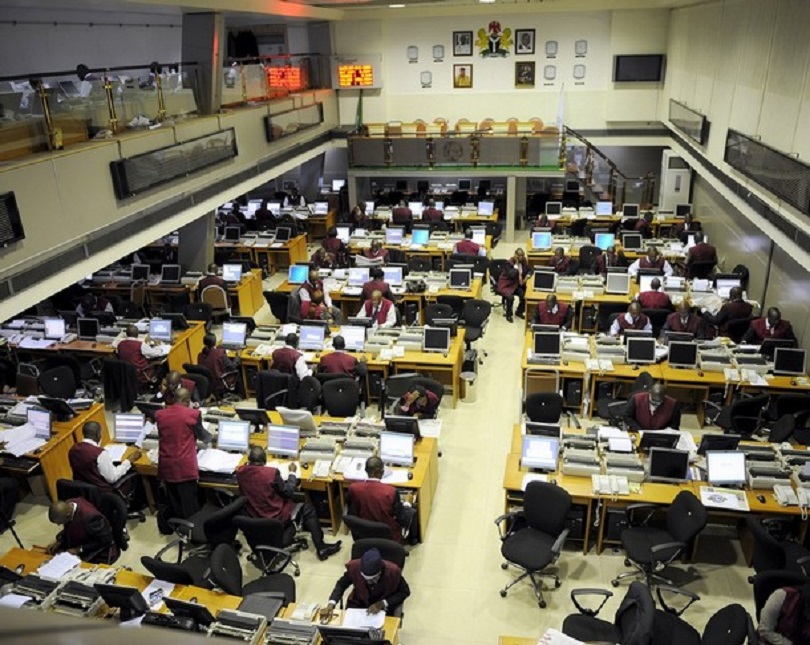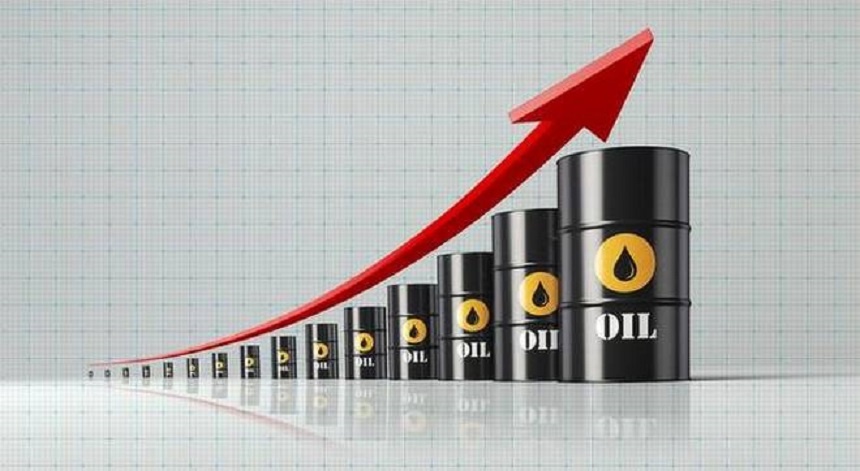Economy
Brent Declines to $28 Per Barrel as WTI Nears $21

By Adedapo Adesanya
Oil prices closed mixed on Wednesday, April 15 following new rounds of projections by the International Energy Agency (IEA) that global demand will fall by a record 9.3 million in 2020 year-on-year impacted by the coronavirus pandemic.
Major futures, which were already in negatives, plunged further with the international benchmark, Brent crude dropping $1.47 or 4.97 percent to $28.13 per barrel.
On the other hand, the US West Texas Intermediate (WTI) after plunging to as low as $19, regained some of the day’s losses as at press time; up 29 cents or 1.44 percent at $20.43 per barrel.
On Wednesday, an IEA report said that global oil demand will drop by 9.3 million barrels per day for the year, compared with 2019. This month alone, it projected oil demand worldwide to decline by 29 million barrels per day, a level that was last recorded 25 years ago.
Prices have been negatively impacted by the coronavirus pandemic, as government called for strict social distancing to curb the spread of COVID-19 and have caused airlines to cut flights and consumers to stay home.
Measures to cushion this have been futile so far as the latest, an oil production cut, has failed to help the commodity rebound. Over the weekend, producers agreed to historic output cap to support falling demand of the black gold.
The Organisation of the Petroleum Exporting Countries (OPEC) cartel, its allies and other G20 countries agreed to cut production from next month, which the IEA said could not stop the impact of the virus.
Basically, the only thing that can really help the market now is an end of the coronavirus worldwide, which means economic activities, travel, and demand can rise again.
Although at this time, the cut won’t help, it will help in the future as stated in the IEA report that “by lowering the peak of the supply overhang and flattening the curve of the build-up in stocks, they help a complex system absorb the worst of this crisis, whose consequences for the oil market remain very uncertain in the short term.”
“There is no feasible agreement that could cut supply by enough to offset such near-term demand losses,” the IEA said. “However, the past week’s achievements are a solid start and have the potential to start to reverse the build-up in stocks as we move into the second half of the year,” it added.
Economy
Seplat Completes Conversion of Onshore Assets to PIA Fiscal Regime

By Adedapo Adesanya
Seplat Energy Plc has completed the conversion of its operated onshore oil and gas assets to the fiscal regime of Nigeria’s Petroleum Industry Act (PIA), marking a major regulatory milestone for the company.
In a statement issued on Tuesday, the dual-listed Nigerian energy firm said its subsidiaries, Seplat West Limited and Seplat East Onshore Limited, finalised the conversion from the former Petroleum Profits Tax framework to the PIA regime following the fulfilment of all technical and regulatory requirements.
The PIA, signed into law in August 2021, was introduced to modernise governance, improve transparency, attract investment, and make Nigeria’s petroleum fiscal framework more competitive globally.
The conversion covers assets previously held under Oil Mining Leases (OMLs) 4, 38, 41 and 53. During the first nine months of 2025, these assets recorded an average working interest production of 42,591 barrels of oil equivalent per day, accounting for approximately 31 per cent of Seplat’s total output.
According to the company listed on both the Nigerian Exchange Limited and the London Stock Exchange, the PIA framework is expected to support increased investment, production growth and improved operational efficiency. The anticipated impact of the conversion had already been factored into Seplat’s medium-term guidance presented at its Capital Markets Day in September 2025.
Seplat noted that it executed Conversion Contracts with its joint venture partners in February 2023 and has since worked closely with the Nigerian Upstream Petroleum Regulatory Commission (NUPRC) to complete the process. New Petroleum Mining Lease (PML) and Petroleum Prospecting Licence (PPL) numbers have now been issued, with PIA-based operations expected to commence from January 1, 2026, subject to regulatory guidance.
Commenting on the development, Chief Executive Officer Roger Brown said the successful conversion reflects the company’s commitment to regulatory compliance and value creation.
“Conversion to the PIA fiscal regime has been an important focus for Seplat, and we are delighted to have delivered, alongside our respective joint venture partners, the conversion of our onshore operated assets within the timeline outlined at our recent Capital Markets Day,” Mr Brown said.
He added that the transition positions the company for improved profitability and stronger cash flow margins in its onshore business.
Seplat also disclosed that it is continuing efforts to convert its offshore assets to the PIA regime, with a target completion date of 2027.
Economy
NASD Index Rises 0.16% on Renewed Investors’ Appetite

By Adedapo Adesanya
The NASD Over-the-Counter (OTC) Securities Exchange rose by 0.16 per cent on Monday, December 22 as investors showed hunger for unlisted stocks.
Trading data showed that the volume of securities traded at the session surged by 532.9 per cent to 12.6 million units from the previous 1.9 million units, as the value of transactions jumped by 64.3 per cent to N713.6 million from N80.3 million, though the number of deals moderated by 13.5 per cent to 32 deals from the 37 deals recorded in the previous trading session.
Infrastructure Credit Guarantee Company (InfraCredit) Plc ended the day as the most traded stock by value on a year-to-date basis with 5.8 billion units sold for N16.4 billion, followed by Okitipupa Plc with 178.9 million units worth N9.5 billion, and MRS Oil Plc with 36.1 million units transacted for N4.9 billion.
InfraCredit Plc also finished the trading day as the most traded stock by volume on a year-to-date basis with 5.8 billion units traded for N16.4 billion, trailed by Industrial and General Insurance (IGI) Plc with the sale of 1.2 billion units for N420.7 million, and Impresit Bakolori Plc with a turnover of 537.0 million units valued at N524.9 million.
The unlisted securities market printed a price loser, FrieslandCampina Wamco Nigeria Plc, which dropped 20 Kobo to sell at N53.80 per share versus last Friday’s closing price of N54.00 per share.
However, the loss was offset by the trio of NASD Plc, Golden Capital Plc, and UBN Property Plc.
NASD Plc gained N5.00 to close at N60.00 per unit versus N55.00 per unit, Golden Capital Plc appreciated by 77 Kobo to N8.45 per share from N7.68 per share, and UBN Property Plc improved by 22 Kobo to N2.43 per unit from N2.21 per unit.
As a result, the market capitalisation increased by N3.38 billion to N2.125 billion from N2.121 trillion, and the NASD Unlisted Security Index (NSI) grew by 5.65 per cent to 3,552.06 points from 3,546.41 points.
Economy
Nigeria’s Stock Exchange Sustains Bull Run by 0.26%

By Dipo Olowookere
The bulls remained on the floor of the Nigerian Exchange (NGX) Limited on Monday, rallying by 0.26 per cent at the close of transactions.
This was buoyed by the gains recorded by 34 equities on Nigeria’s stock exchange, which outweighed the losses posted by 20 equities, indicating a positive market breadth index and strong investor sentiment.
Aluminium Extrusion gained 9.72 per cent to quote at N13.55, International Energy Insurance improved by 9.69 per cent to N2.49, Mecure Industries rose by 9.64 per cent to N60.30, Royal Exchange expanded by 9.60 per cent to N1.94, and Austin Laz grew by 9.50 per cent to N2.65.
On the flip side, Custodian Investment depleted by 10.00 per cent to N35.10, ABC Transport crashed by 10.00 per cent to N3.15, Prestige Assurance weakened by 7.41 per cent to N1.50, and Guinea Insurance slipped by 7.38 per cent to N1.13.
During the session, investors traded 451.5 million shares worth N13.0 billion in 33,327 deals compared with the 1.5 billion shares valued at N21.8 billion transacted in 25,667 deals in the preceding session, showing spike in the number of deals by 29.84 per cent, and a decline in the trading volume and value by 69.90 per cent and 40.37 per cent apiece.
The first trading session of the Christmas week had Tantalizers as the most active with 50.2 million units sold for N127.5 million, First Holdco transacted 32.6 million units worth N1.5 billion, Access Holdings exchanged 27.3 million units valued at N562.3 million, Custodian Investment traded 22.1 million units for N857.8 million, and Chams transacted 21.3 million units valued at N71.1 million.
When the closing gong was struck at 2:30 pm to end trading activities, the All-Share Index (ASI) was up by 401.69 points to 152,459.07 points from 152,057.38 points and the market capitalisation went up by N256 billion to N97.193 trillion from N96.937 trillion.
-

 Feature/OPED6 years ago
Feature/OPED6 years agoDavos was Different this year
-
Travel/Tourism9 years ago
Lagos Seals Western Lodge Hotel In Ikorodu
-

 Showbiz3 years ago
Showbiz3 years agoEstranged Lover Releases Videos of Empress Njamah Bathing
-

 Banking7 years ago
Banking7 years agoSort Codes of GTBank Branches in Nigeria
-

 Economy3 years ago
Economy3 years agoSubsidy Removal: CNG at N130 Per Litre Cheaper Than Petrol—IPMAN
-

 Banking3 years ago
Banking3 years agoFirst Bank Announces Planned Downtime
-

 Banking3 years ago
Banking3 years agoSort Codes of UBA Branches in Nigeria
-

 Sports3 years ago
Sports3 years agoHighest Paid Nigerian Footballer – How Much Do Nigerian Footballers Earn
















